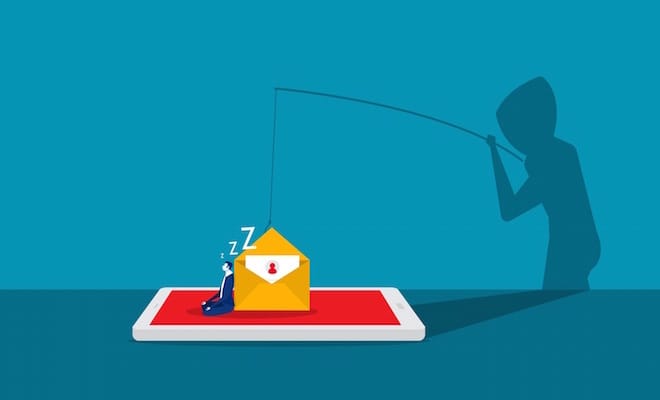

Phishing attacks are among the constant and advanced threats in cybersecurity. They usually come as deceiving emails, whereby an attacker impersonates a person or entity of trust in an attempt to have the recipient click on links that are malicious or download malicious attachments with the intention of stealing sensitive information like details about their payment cards or credentials to an account.
Falling victim to a phishing attack can be quite distressing, but quick and firm actions may reduce the damage. Guided by Medha Cloud’s expertise in cybersecurity solutions, here is a step-by-step guide to help you recover from a phishing attack and strengthen your defenses.
1. Unplug your gadget from the Internet.
Immediately disconnect the compromised device from the internet to avoid the spread of malware. Immediately disconnect the Wi-Fi or pull out the cable of the internet to keep the system in isolation.
2. Change your passwords
If credentials were entered on a spoof website, immediately update your passwords on the legitimate platform. Avoid using the same password across multiple accounts. Organizations are advised to consider organization-wide password resets and the use of password management tools by Medha Cloud.
3. Scanning your network for malware
Run a deep malware scan across your network, devices, files, applications, and servers. Medha Cloud’s managed IT services boast advanced threat detection and response capabilities to help identify and eliminate malware.
4. Check for signs of identity theft
Look for unusual transactions in your financial accounts. Report the incident to your bank and credit reporting services such as TransUnion, Equifax, and Experian (U.S.).Medha Cloud can help organizations get solutions to monitor and report against identity theft.
5. Brief employees on the situation
Interact with team members to see if others have clicked on the phishing email. Medha Cloud recommends routine cybersecurity awareness training that helps employees identify and report a phishing attempt.
6. Implement multi-factor authentication (MFA)
This means making MFA available for all accounts. Even in the case of credential compromise, attackers would have to provide another form of authentication to gain access. Medha Cloud can help deploy and manage MFA solutions that best fit your organization’s needs.
7. Security audit
Conduct a deep security audit to identify gaps in your cybersecurity framework. That also means reviewing current policies, tools, and procedures. Medha Cloud’s security specialists can perform in-depth audits to make sure your defenses align with industry best practices.
8. Incident response plan
Create or refine an incident response plan to prepare for future attacks. This would include roles, responsibilities, and steps to be taken in case of a security breach. Medha Cloud helps organizations design robust incident response frameworks to ensure swift and coordinated action in critical situations.
9. Perform a forensic analysis
Detailed investigation to understand the scope of the attack: key actions will involve checking firewall logs for unusual network traffic, scanning the mail server logs for recipients of the phishing email, tracking user lookups of malicious domains through DNS logs, and performing email header and attachment analysis to look for clues. In addition, forensic analysis services by Medha Cloud can help organizations bring out the root cause and provide actionable insights for remediation.
10. Tweak spam filters
Update spam filters to block similar emails. Medha Cloud’s email security solutions use AI-powered algorithms that detect and quarantine suspicious emails before they even reach mailboxes.
11. Research the attack online
Research online to gather more information about the phishing attack. Medha Cloud’s cybersecurity experts keep organizations updated on emerging threats and trends in phishing tactics.
12. Educate employees
Inform the employees and management about the phishing attack. Medha Cloud provides bespoke cybersecurity awareness training programs that enable teams to know how to respond to potential threats before they occur.
13. Contact the spoofed organization
If the phishing email spoofed a genuine entity, then the incident should be reported to that organization. They can then alert their customers and take appropriate steps to mitigate further abuse. In such scenarios, Medha Cloud facilitates communication with external organizations.
14. Report the incident to the federal trade commission (FTC)
For U.S. residents, report the phishing incident to the FTC for guidance on protecting compromised information. Medha Cloud can assist with regulatory compliance and reporting requirements.
15. Backup and Update Your Software
Back up your data to ensure it is safe during the remediation process. Immediately patch all the software with updates. Backup and disaster recovery solutions from Medha Cloud ensure the integrity of data and restore it quickly in case of an attack.
Medha Cloud specializes in a robust cybersecurity solution to defend businesses against phishing attacks, among other cyber threats. From incident response and forensic analysis to employee training and threat monitoring, Medha Cloud provides all-inclusive services for the protection of any organization, regardless of size.
Through its expertise, Medha Cloud can help businesses mitigate this risk and develop their capacity to respond to evolving cyber threats. Schedule an appointment with Medha Cloud to find out how to secure your defenses and ensure your business will continue operating as usual.
Speed is key when responding to a phishing incident. You can recover from one smoothly and prepare for a secure future with the support of Medha Cloud.
Ready to protect your organization from cyber threats? Contact Medha Cloud today to schedule a consultation and discover how we can secure your business.

